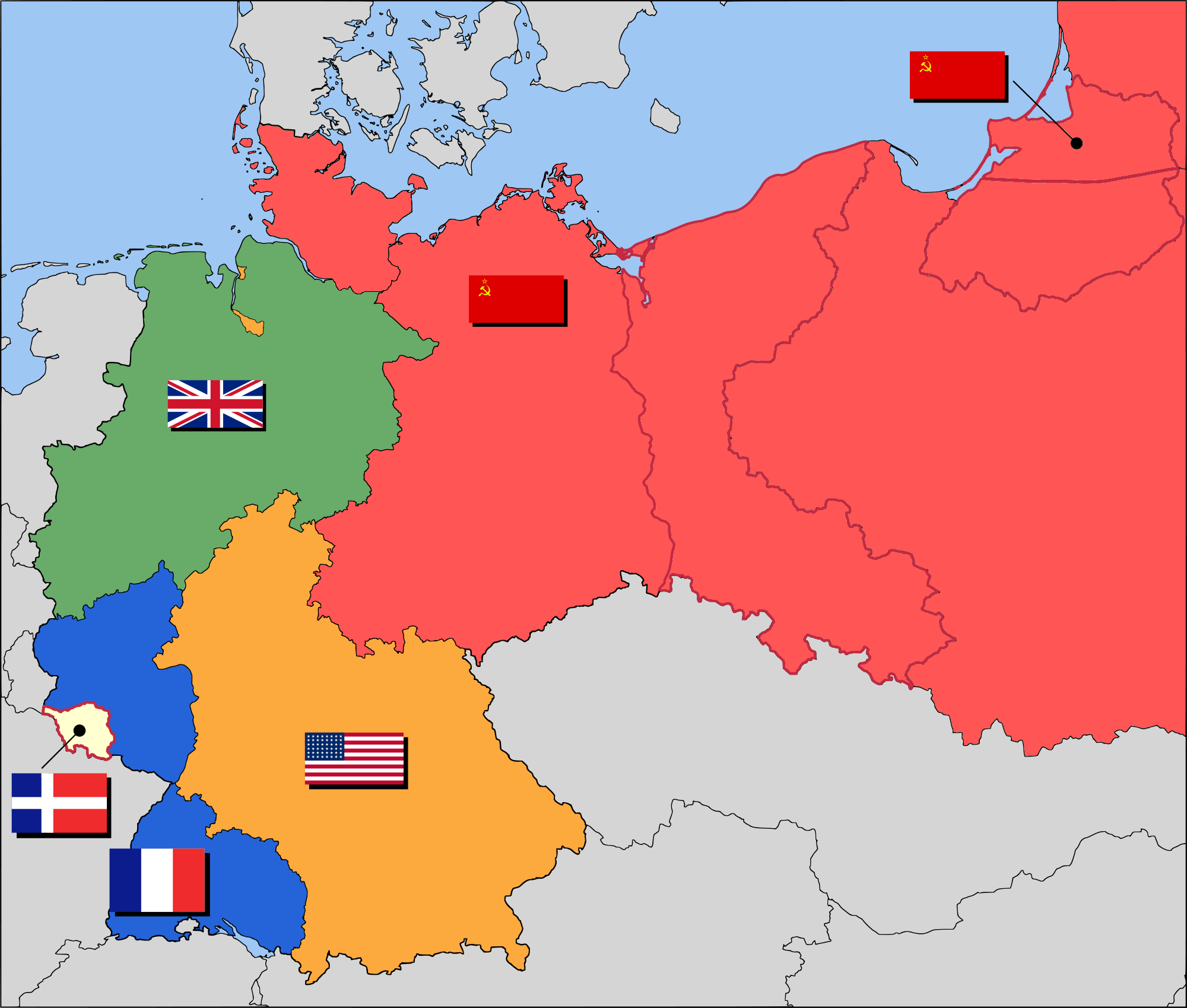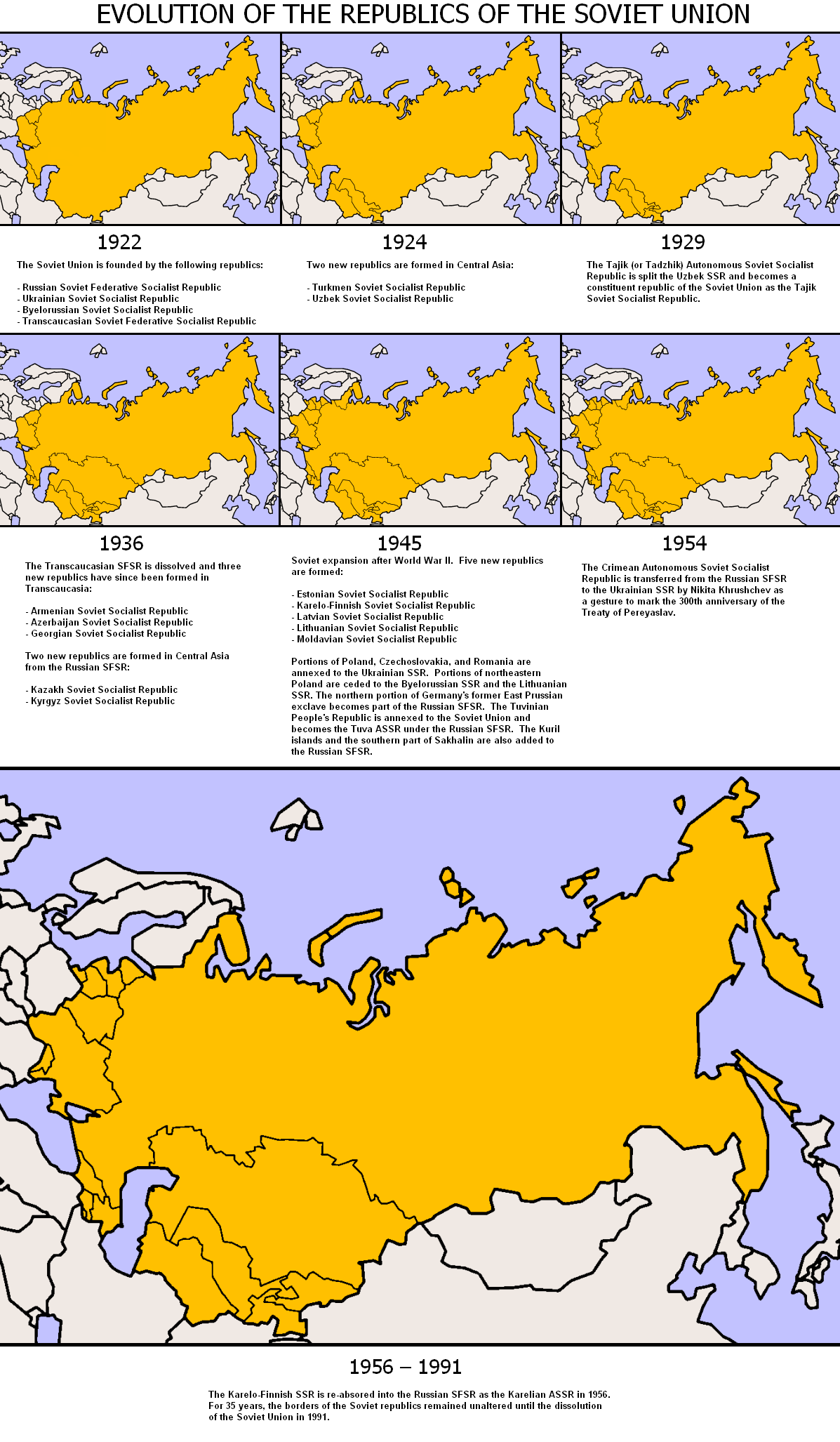Rev HISTORY OF THE SOVIET UNION (Formerly, The Rise and Fall of the Soviet Union) EXAM CONTENT OUTLINE The following is an outline of the content areas covered in the examination. An examination of political, social and cultural developments in the Soviet Union. The book identifies the social tensions and political inconsistencies that spurred radical change in the government of Russia, from the turn of the century to the revolution of 1917. Economic History of the Soviet Union Economic theory must distinguish between publicly owned and privately owned property if it is to account for the effect of institutions on the behavior of individuals. 1922 Union treaty formally joins Russia, Ukraine, Belarus and the Transcaucasus which were divided in 1936 into Georgia, Armenia and Azerbaijan into the Soviet Union. The military history of the Soviet Union began in the days following the 1917 October Revolution that brought the Bolsheviks to power. The new government formed the Red Army to fight various enemies in the Russian Civil War. The years saw Red Army's defeats in the PolishSoviet war and The Soviet Unions attempt to deter contact with the West, despite the fact that Angola needed more aid than the USSR was giving, showed that the interests of. A straightforward and unbiased history of the Soviet Union which puts a greater focus on the Stalin era. I didn't choose this specific one for any reason (it was a. The Union of Soviet Socialist Republics. During the period of its existence, the Union of Soviet Socialist Republics was by area the worlds largest country. Geoffrey Hosking has been Professor of Russian History at the School of Slavonic Studies, University of London, since 1984. He is the author of the awardwinning. A good account on the history of the soviet union from its premises in the last Tsartist years until its fall and even beyond, to the first election of Vladimir Putin. Economical, political, social aspects, international relations and even cultural life are evoked. Alexander Nevsky is instituted in Russia by the empress Catherine I. It would later be discontinued and then reinstated by the Soviet government in 1942 as the Order of Alexander Nevsky. The Soviet Union was a world superpower that helped to shape and define almost the whole 20th century. The Soviet Union formed out of the ashes of World War One, was a victor of World War Two and went on to challenge the United States as a world superpower during the Cold War. The Cold War Collapse of the Soviet Union The collapse of the Soviet Union started in the late 1980s and was complete when the country broke up into 15 independent states on December 25, 1991. The Soviet Union (short for Union of Soviet Socialist Republics or USSR) was a singleparty MarxistLeninist state. It existed from 1922 until 1991, and was the first country to declare itself socialist and build towards a communist society. A History of the Soviet Union from the Beginning to its Legacy 3rd Edition. A History of the Soviet Union from the Beginning to the End Peter Kenez. The Rise and Fall of the Soviet Union (Longman History Of Russia) Martin Mccauley. After defeat of Germans in 1945, all ethnically Ukrainian lands that had been the part of Poland, Romania or Czechoslovakia between World Wars were taken by the Soviet Union, with most of. If you're planning on taking the DSST History of the Soviet Union exam, use this study guide course to prepare quickly. Shevchenko discussed the history of the Soviet Union, as well as its political future. Javascript must be enabled in order to access CSPAN videos. Transcript type Text People Graphical Timeline The history of the Soviet Union from 1985 to 1991 covers the dissolution of the Soviet Union. (Dissolution means ending or splitting up) The dissolution of the Soviet Union describes its end as a separate country. The Soviet Union had many regions called republics. The history of the millions of people who were allegedly incarcerated and died in the labour camps of the Soviet Union and as a result of starvation during Stalin's time. In this world we live in, who can avoid hearing the terrible stories of suspected death and murders in. This is a place for learning about the history of the Soviet Union or U. (Union of Soviet Socialist Republics) from 1922 to 1991, and first SovietBolshevik government from. Allied armies led by the United States, the United Kingdom, and France, seeking to prevent the spread of Communism or Russia's exit from the war effort, attempted to invade the Soviet Union and support forces hostile to the Bolsheviks with the intention of overthrowing the Soviet regime. The Soviet Union fell in 1991, thanks not to military defeat but economic and political factors (see history of the Soviet Union ( )). The Soviet military consisted of five armed services. In their official order of importance, the Soviet armed services were the Strategic Rocket Forces, Ground Forces, Air Forces, Air Defense Forces, and. On Christmas Day 1991, the Soviet flag flew over the Kremlin in Moscow for the last time. A few days earlier, representatives from 11 Soviet republics (Ukraine, the Russian Federation, Belarus. The Soviet Union was made of 15 republics. These were either Soviet Socialist Republics, or Soviet Socialist Federal Republics. Each of these republics was independent. It also had the right to leave the union, which they did in 1991. COM DSST HISTORY OF THE SOVIET UNION EXAM INFORMATION This exam was developed to enable schools to award credit to students for knowledge equivalent to that learned by students taking the course. Geoffrey Hosking is a major writer on Soviet History and this book shows his knowledge on his chosen subject is enormous. Within the 570 pages of this book he deals with the entire history of the Soviet Union in a comprehensive manner. Animal Farm A Brief History of the Soviet Union, Buy Study Guide Before the revolution of 1917, Russia had been an imperial autocracy since the reign of Peter the Great in the 1700s. The Soviet Union was the first nation with a socialist government, and the Soviet flag inspired several other countries which aspired for similar governance. The national flags of many nations, such as Afghanistan, Mongolia, Congo, People's Republic of China, Albania, Angola, Korea, and Vietnam were inspired by the Soviet flag, and had a lot of. The common short name is Soviet Union, from, Sovetskiy Soyuz. A soviet is a council, the theoretical basis for the socialist society of the USSR. A soviet is a council, the theoretical basis for the socialist society of the USSR. A chronology of key events in the history of the Soviet Union. A chronology of key events in the history of the Soviet Union. Many Russians still fondly remember the Soviet Union and its symbols The First Socialist Society: A History of the Soviet Union from Within Geoffrey A. A History of the Soviet Union, Geoffrey A. History Europe Russia the Former Soviet Union. Images of the Soviet Union Arts Cities Commerce Farming People Religion Social Services Workers Politics Photo Album of Revolutionary Russia An album produced in the Russian Federation of Images of the Soviet Russian Federation in 1919. Soviet Union Violates PolishSoviet NonAggression Pact with Invasion of Polish Territory by Red Army The Red Army entered the eastern regions of Poland with seven field armies, containing between 450, 000 and 1, 000, 000 troops, split between two The European Union is set up with the aim of ending the frequent and bloody wars between neighbours, which culminated in the Second World War. As of 1950, the European Coal and Steel Community begins to unite European countries economically and politically in order to secure lasting peace. After overthrowing the centuriesold Romanov monarchy, Russia emerged from a civil war in 1921 as the newly formed Soviet Union. With the dissolution of Soviet Union, the main goal of the Bush administration was economic and political stability and security for Russia, the Baltics, and the states of the former Soviet Union. Bush recognized all 12 independent republics and established diplomatic relations with Russia, Ukraine, Belarus, Kazakhstan, Armenia and Kyrgyzstan. 1 History of the Soviet Union: New trends and subfields in the 1990s 2010s Dr Nataliia Laas Institute of History of Ukraine, National Academy of Sciences of Ukraine A union of multiple subnational Soviet republics, its government and economy were highly centralized. The Soviet Union was a oneparty state, governed by. The events of August 1991 led to the Soviet Union, and President Gorbachev, being consigned to the history books. Westerners often consider Russia through the prism of the Soviet Union and the Second World War. But we must look further back if we wish to understand the modern nations fears, aims and motivations. A History of the Soviet Union from the Beginning to the End Second Edition Peter Kenezs A History of the Soviet Union from the Beginning to the End examines not only political change but also social and cultural developments. The Soviet Union, officially the Union of Soviet Socialist Republics (USSR), was a socialist federation in Eurasia that existed from 1922 to 1991. Nominally a union of multiple national Soviet republics, its government and economy were highly centralized. The country was a oneparty state, governed by the Communist Party with Moscow as its capital in its largest republic, the Russian Soviet. A Complete History Of The Soviet Union Through The Eyes Of A Humble Worker, Arranged To The Melody Of Tetris. Music by Pig With The Face Of A Boy Written and performed by DONALD NEWHOLM and DAN. Soviet History Archive Special 100th Anniversary of the Russian Revolution PageSpecial 100th Anniversary of the Russian Revolution Page.











